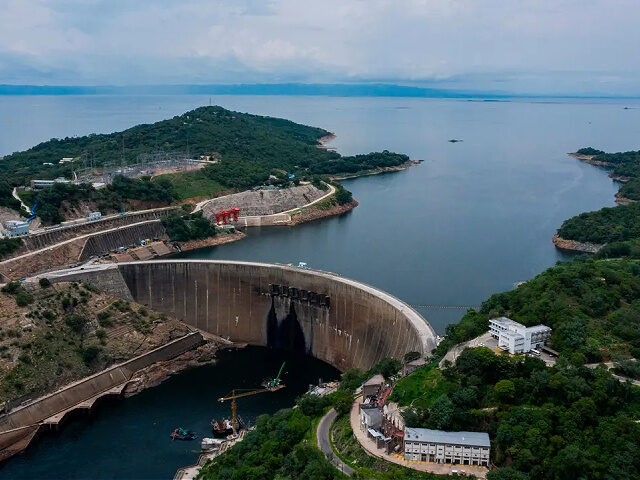Zambia’s state-owned electricity company ZESCO said this week it had produced a surplus of energy for Zambia of about 1,156 MW, the online newspaper New Zimbabwe reported Friday.
“We thus have a surplus of 1,156.8 MW that is available for trade within the interconnected SAPP [Southern African Power Pool] network,” ZESCO Managing Director Victor Mapani said this week as quoted by New Zimbabwe on July 22.
ZESCO, officially the Zambia Electricity Supply Corporation Ltd., produces roughly 80 percent of the electricity consumed by Zambia. ZESCO is a member of the SAPP, which is a common power grid shared between 17 other countries in the region, including Zimbabwe.
Zambia and Zimbabwe’s energy needs are closely entwined, as the neighbors are separated by the hydropower-generating Zambezi River. ZESCO operates hydropower stations along the Zambezi River to fuel its electricity supply, in addition to running thermal power plants.
Zambia’s government expressed a desire to share its surplus energy stores with Zimbabwe and Namibia on July 19.
“Peter Kapala, the [Zambian] Minister of Energy said the enhanced generation capacity [of ZESCO] will help the country service power supply agreements for the export of 180 MW to Namibia and 100 MW to Zimbabwe,” Xinhua, China’s official state press agency, reported.
China’s government inked a deal with ZESCO in recent years to construct a 750 MW hydroelectric power station on the Zambezi River known as the Kafue Gorge Lower Hydro Power Project (KGL). The agreement stemmed from Zambia’s membership in Beijing’s Belt and Road Initiative (BRI). The BRI allows China’s government to fund infrastructure projects in developing or lower-income nations based on dubious loan structures that often push member states into deep debt to Beijing. Xinhua on July 20 cited KGL’s power output as having contributed to ZESCO’s recent energy surplus.
“The power utility [ZESCO] said the commissioning of four by 150 MW capacity from the Kafue Gorge Lower Power Station has resulted in increased power generation with national generation capacity currently standing at 3,456.8 MW against a peak national demand of about 2,300 MW,” the news agency noted.
An April 28 article by the Paris-based magazine the Africa Report indicated that KGL’s development had recently stalled due to Zambia’s inability to make payments toward a Chinese government loan funding the project.
Detailing KGL’s halted progress, the magazine wrote:
In 2019, the Export-Import Bank of China and the Industrial and Commercial Bank of China Limited froze funding to 750MW Kafue Gorge Lower Hydro Power Project (KGL), putting further delay on the completion of the flagship project, which planned to turn Zambia into a net power exporter.
The project was initially planned for completion in December 2020 but a combination of the outbreak of the Covid-19 and financing challenges delayed the project, which is estimated to cost $2.3bn.
The power project is expected to be the first major hydropower station to be constructed in Zambia in nearly 50 years despite water-generated electricity being the backbone of the country’s power infrastructure.
KGL is jointly owned by ZESCO and Sinohydro, which is a Chinese state-owned hydropower engineering and construction company. Sinohydro is responsible for all of KGL’s construction works.
“While ZESCO’s obligations are guaranteed by the Zambian Treasury, without clarity on the debt restructuring programme, coupled with concerns about both Zambia and ZESCO’s heavy indebtedness, Sinohydro became unwilling to handover the [KGL] project in full to Zambia by 2021 as both EximBank and ICBC requested ‘greater security’ around payments owed to them,” The Africa Report noted in late April.
KGL’s true developmental status remains unclear. While Chinese state media and local southern African newspapers claimed this week that Zambia had recently produced an energy surplus owing to KGL’s output, The Africa Report‘s revelation in late April that KGL’s construction was recently halted casts doubt on the hydroelectric plant’s ability to have generated surplus-levels of power within the past few months.
If true, Zambia’s current electricity surplus would represent an anomaly among most other power-producing nations. Several countries both within Africa and across the globe (including Nigeria, Sri Lanka, China, and European nations such as France) have reported power deficits in recent months or concerns about ensuring domestic energy supplies.

COMMENTS
Please let us know if you're having issues with commenting.